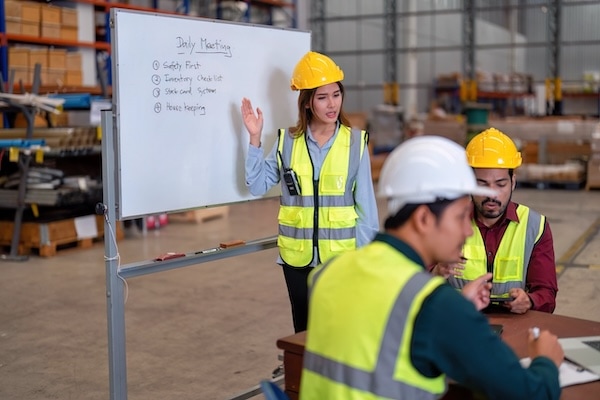In the world of occupational safety, particularly in sectors like construction, manufacturing, and utility services, the importance of robust fall protection measures cannot be overstated. Among these, guardrails and safety nets are two critical components that play a pivotal role in safeguarding workers from the risks associated with working at heights. Understanding their role, proper installation, and maintenance is essential for creating a safe working environment.
The Crucial Role of Guardrails in Fall Prevention
Guardrails are one of the most effective means of passive fall protection, providing a physical barrier that prevents workers from accidental falls. They are typically used around the perimeters of elevated platforms, walkways, and roofs.
Key Features of Effective Guardrails
- Height and Strength: Guardrails should be of adequate height, usually at least 42 inches, and must be strong enough to withstand forces exerted upon them during a potential fall.
- Top Rail, Mid Rail, and Toeboard: A complete guardrail system includes a top rail, mid rail, and toeboard to prevent workers from falling over or through the guardrail and to stop tools or materials from falling to lower levels.
- Visibility: Guardrails should be highly visible to ensure they are easily seen by workers.
Safety Nets: A Secondary Line of Defense
Safety nets are used as a passive fall arrest system, primarily on construction sites. They are designed to catch workers if they fall, reducing the distance and consequences of a fall.
Effective Implementation of Safety Nets
- Placement and Rigging: Safety nets should be placed as close as possible to the working level, generally not more than 30 feet below.
- Size and Mesh Dimensions: The nets must be large enough to effectively break a fall and have appropriately sized mesh to prevent a person from falling through.
- Regular Inspection and Testing: Safety nets should be inspected regularly for wear, damage, and proper tension.
Compliance with Standards and Regulations
Both guardrails and safety nets must comply with Occupational Safety and Health Administration (OSHA) standards or equivalent regulations. This includes specifications for design, installation, and maintenance.
Installation Considerations
Proper installation is crucial for the effectiveness of guardrails and safety nets. It requires careful planning and adherence to manufacturer guidelines and safety standards. Ensure that the installation is carried out by trained professionals.
Maintenance and Inspection
Regular maintenance and inspection are vital to ensure that guardrails and safety nets continue to provide reliable protection. This includes checking for corrosion, structural integrity, proper anchorage, and any signs of damage or wear.
Training and Awareness
Workers should be adequately trained on the correct use of guardrails and safety nets. This includes understanding their limitations, the importance of not altering or removing these safety devices, and how to report potential problems.
Integrating Guardrails and Safety Nets into a Comprehensive Fall Protection Plan
While guardrails and safety nets are essential, they should be part of a comprehensive fall protection plan that includes other elements like personal fall arrest systems, hazard assessments, and rescue plans.
Guardrails and safety nets are indispensable components of a comprehensive fall protection strategy. Their proper implementation, regular maintenance, and compliance with safety standards are fundamental in guarding against gravity and ensuring a safe working environment. By investing in these critical safety measures and fostering a culture of safety, organizations can significantly mitigate the risks associated with working at heights.







